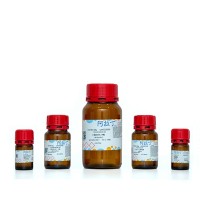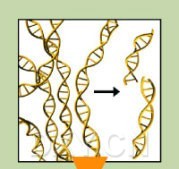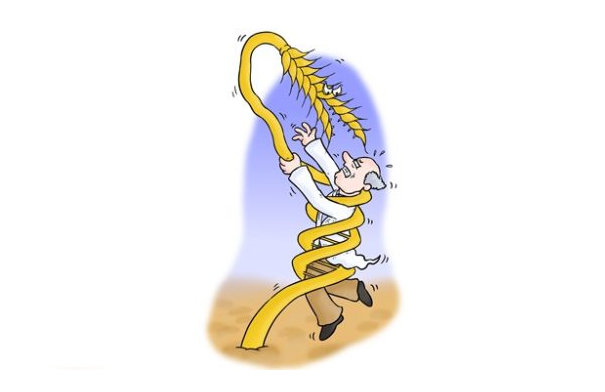罗氏454测序平台成功解读小麦基因组
互联网
英国研究人员于上周公布了首个小麦基因组序列。其中,研究人员利用罗氏454 GS FLX测序平台,以5倍的基因组覆盖度对小麦基因组进行测序,并覆盖95%的小麦已知基因。
该项目至今历时一年左右,期间获得来自于英国生物技术和生物科学研究学会为期两年约170万英镑(260万美元)的项目资助。
在接下来的一年中,研究人员计划对测序结果做进一步分析,并对单核苷酸多态性(SNP)进行验证。
“我们不仅仅要拼接出完整的小麦基因组草图,而更重要的目标在于鉴别出不同小麦品种间多态性,尤其是与基因及特异基因组拷贝数有关的单核苷酸多态性”,利物浦大学功能及比较基因组学教授及项目首席科学家Neil Hall说到。
Hall教授表示,整个测序项目的完成是基于罗氏454 GS Titanium测序试剂及仪器平台。该平台其能够实现稳定400bp以上的测序读长,其科研小组在一些测序运行中还获得更高至650bp的测序读长。长读长便意味着序列拼接的显著优势。同时,Hall教授表示,他们也完成了一部分转录组测序,以帮助确定哪些编码区出现SNP,并确定相关基因表达。
小麦基因组测序工作非常具有难度及挑战。之所以选择罗氏454平台,Hall教授认为,因为小麦基因组非常大约16Gb,约为人基因组的5倍,是目前测定过的最大的基因组之一。且其具有许多重复区域,是一个相当复杂的六倍体基因组。相比一些短读长平台,454的长读长优势能够非常有效地帮助确认某一SNP对于某一特定小麦品种是否具有特异性,其是否是杂合或纯合。
研究人员认为,对该小麦参考品种Chinese Spring wheat的序列解读,将使他们能够更好地了解小麦品系遗传差异引起的农业相关的表型性状,如干旱、耐盐性及高产量。
该序列数据目前也已被上传到欧洲生物信息研究所和美国国家生物技术信息中心的数据档案中。
国际小麦基因组测序联盟委员和BBSRC基因组分析中心主任Jane Rogers,在一份声明中强调,小麦基因组草图数据的发布 “将成为科学家和植物育种领域强有力的平台,以进一步鉴定小麦品种之间的遗传差异”。
Wheat Genome Sequenced on Roche's 454
August 31, 2010
By Monica Heger
This story, originally published on August 27, has been updated to include additional information from the UK researchers.
A team of researchers in the UK last week released the first sequence coverage of the wheat genome. The researchers sequenced the genome to five-fold coverage on Roche's 454 GS FLX and covered around 95 percent of known wheat genes.
The project, which took around a year, was funded by the UK's Biotechnology and Biological Sciences Research Council under a two-year £1.7 million ($2.6 million) grant.
Over the next year, the researchers plan to analyze the results of their sequencing, validate their SNP calls, and sequence four additional wheat varieties on Life Technologies' SOLiD platform.
The goal is not to generate a complete draft assembly of the wheat genome but instead to identify "useful polymorphisms between different wheat varieties — SNPs we can link to genes and specific genome copies," Neil Hall, professor of functional and comparative genomics at the University of Liverpool and lead researcher of the project, told In Sequence.
Hall said that the sequencing was done on the 454 using Titanium chemistry and that they had average read lengths of around 400 base pairs. The team also did some runs with longer read lengths of 650 base pairs. Additionally, Hall said they have done some transcriptome sequencing in order to help determine which SNPs fall in the gene coding regions, and also to determine expression.
He said they chose to use 454 for the sequencing because the wheat genome is large — 16 gigabases — and an incredibly complex hexaploid genome with lots of repetitive regions.
He said while the sequencing on 454 was more expensive and time consuming than a shorter read platform, the longer reads would help determine whether a particular SNP was specific for a certain variety of wheat, and whether it was heterozygous or homozygous.
"The sequence coverage will provide an important foundation for international efforts aimed at generating a complete genome sequence of wheat in the next few years," Mike Bevan at the John Innes Centre, who was part of the project, said in a statement.
The researchers said that the sequence of the reference variety of wheat, Chinese Spring wheat, will allow them to better understand the genetic differences between wheat strains that lead to phenotypic traits of agricultural interest, such as drought or salinity tolerance and higher yields.
Jane Rogers, a member of the coordinating committee of the International Wheat Genome Sequencing Consortium and director of BBSRC's Genome Analysis Centre, said in a statement that the release of the wheat genome data "will be a useful resource for scientists and the plant breeding community and will provide a foundation to identify genetic differences between wheat varieties."
The researchers said that sequencing the wheat genome was particularly challenging because it is one of the largest genomes to be sequenced — around five times as large as the human genome.
While the researchers are not planning to generate a draft assembly of the wheat genome, Hall said that the results of this sequencing study could help in efforts by other groups to create a draft assembly. "I expect a combination of next-gen approaches along with more traditional BAC-based approaches will be the way to get a full map," he said. "We hope our data will be useful for generating a full map."
The sequence data has been uploaded to the short read archive at the European Bioinformatics Institute and the US's National Center for Biotechnology Information.
A draft assembly would require "further read-throughs, significant work on annotation, and the assembly of the data into chromosomes," the team noted in a statement.









